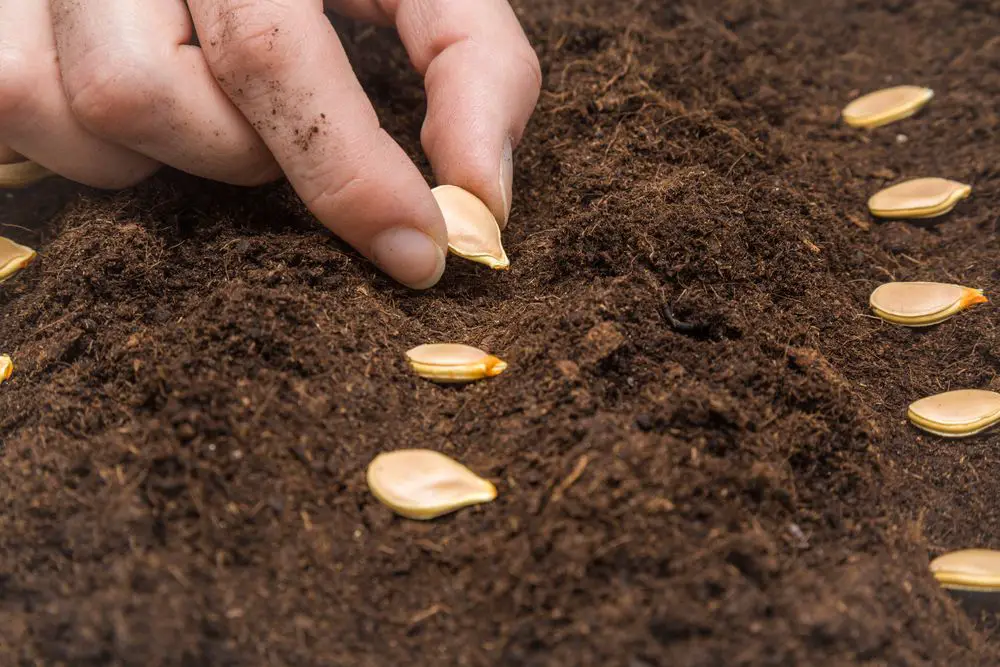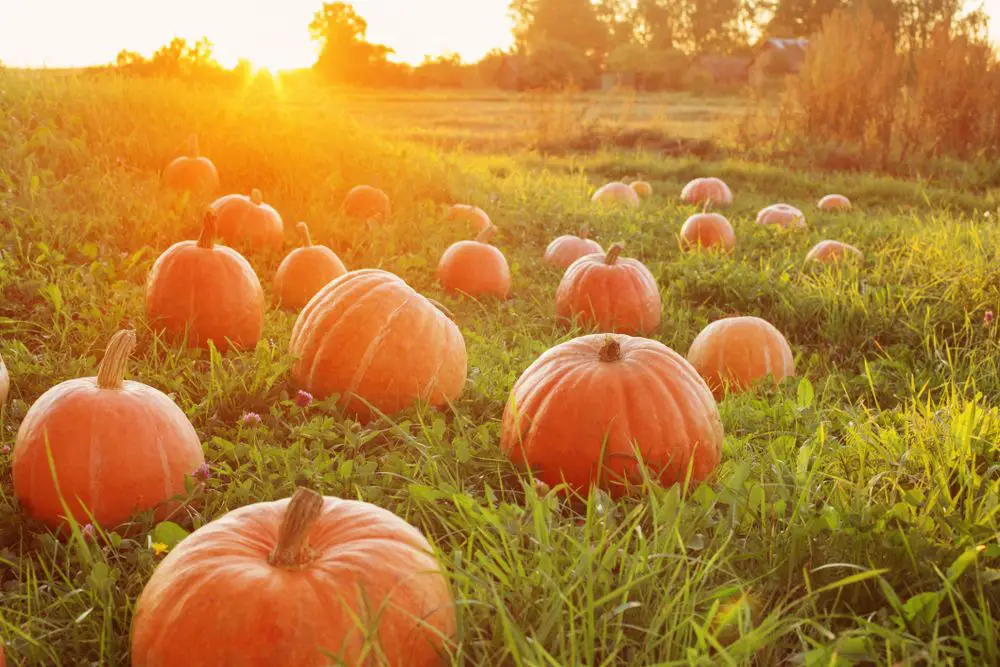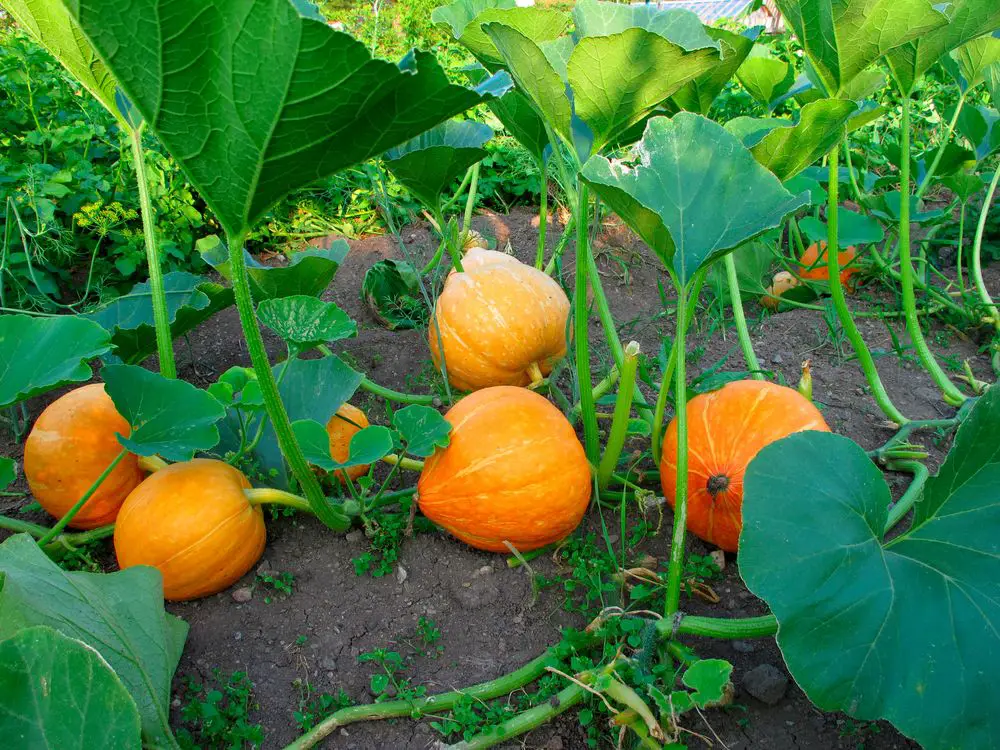Are you planning to grow Pumpkins in your garden? Wanting them this fall? Want to become a better Pumpkin gardener? If that’s the case, you should learn everything necessary in the growing stages of Pumpkins.
Six easy stages of Pumpkin growing: Seed Planting, Germination, Plant Growth, Flowering and Pollination, Fruit Development and Harvesting, towards a bountiful harvest of healthy Pumpkins.
Every single plant has its own stages of growth, and you have to understand how unique and distinct they are from one another. It is more exciting and satisfying watching them grow from seeds to harvest.
Below are the different growing stages of Pumpkins that you must know before growing this plant.
6 Growing Stages of Pumpkins
Pumpkins are usually eaten as winter food. It should be planted in the summer months from early May through June.
Stage 1. Planting of Pumpkin seeds.

The very first step of growing a healthy pumpkin is planting quality seeds. Pumpkins do best when directly sown and sow seeds directly to the garden soil about 2 weeks after the last frost date when the soil temperatures are about 65℉ to 75F. It prefers warm weather, so don’t plant them before temperatures have warmed in the spring.
It is essential to plant your pumpkins in the right location and have room to grow and thrive to their fullest. Sown seeds at one-fourth depth in the soil and always contain enough moisture for germination.
Stage 2. Germination
The germination process of Pumpkin seeds usually takes about 8 to 10 days if the soil is warm. It may take more time when the ground is cold.
seeds usually takes about 8 to 10 days if the soil is warm. It may take more time when the ground is cold.
Pumpkin seedlings may come out of the soil with the seed shell attached to the tip of the leaves. The two leaves, known as seed leaves or cotyledons, appear first. They are false leaves.
Aftepumpkinr five days or later, the true leaves emerge that form a canopy.
Stage 3. Growth Development Of The Plant
Pumpkin vines are now starting to grow. They grow up to 15 cm every week if the plant has adequate water and sunlight. These pumpkin vines are the stem-like structures attached to the main stems.
The leaves of these vines could be up to 10 to 20 feet and depending on their variety. The soil must be watered regularly to achieve the proper growth of the vine. Avoid the leaves from getting wet to prevent possible diseases.
Stage 4. Flowering and Pollination
The flowering stage usually occurs from 8 to 10 weeks after planting. Pumpkin flowers are bright yellow with a long stamen in the middle.
The male flowers will first appear, followed by the female flowers ten days later. At this point, you can now start feeding them with food or organic fertilizer to ensure healthy growth.
Pollination
During the continuous growth of Pumpkins, the vines as well are fast-growing and develop both female and male flowers.
This plant makes male flowers before making female flowers. The pumpkin male flower produces both pollen and nectar.
So then, after extracting the nectar from the male and picking up pollen, the bees move to the female flower, where it drops some of its nectar and after which pollination is complete.
This fruity plant needs the help of its friendly pollinators to complete the pollination process.
Therefore, pumpkin plants are insect-pollinated.
Stage 5. Fruit Development
When the female pumpkin flower pollinates successfully then the fruit will slowly form. Pollination is completed and begins to pave the way for the development of fruits.
Basically, It usually takes about 44 to 45 days for fruit to grow and start producing fruits after flowering fully.
The formation of Pumpkin fruit is the most exciting part of the Pumpkin growing stage. Your hard work is slowly showing its success.
Your pumpkin fruits begin to form. This juicy plant needs plenty of water, sunlight, and moderate temperatures for Pumpkins to yield more fruits.
Stage 4. Harvesting
This is the last stage of pumpkin growth. They are now ready for harvest when the vines start to turn pale brown and wither.
You can also tell if a pumpkin is ready for harvest by tapping on the outside of the Pumpkin. When it gives off a hollow sound, it is now ready.
You will know as well if your pumpkins are now ready for harvest when the fruit is in a deep orange hue, and the skin feels hard.
When harvesting your pumpkin fruits, make sure to leave a few inches of stem above the Pumpkin.
Otherwise, the pumpkin skin may puncture when you harvest it from the vine. If you want your pumpkins to last for a few weeks – a puncture will ruin your chances.
Pumpkins look much 100% cooler with a long stem. Enjoy the fruits of your labor.

Perfect Care For Pumpkins:
- Pumpkins need full sun. More sun yields more Pumpkins and bigger Pumpkins.
- Pumpkins require well-draining soil with a pH of 7.0. Rich sandy loam soil with organic matter is best for these wonderful fruits.
- Mulching this Pumpkin plant to help retain moisture from seeds to seedlings, regulate its temperature, to control weeds, and keep fruit clean.
- Pumpkin plants require a lot of water. Water deeply especially during the fruiting stage. Also, experts recommend watering early in the morning or late in the afternoon.
- As much as possible avoid the leaves getting wet which can encourage diseases.
- Start fertilizing your Pumpkins as the plant needs it. They need food when vines start growing.
- Look out for pollinators to help your Pumpkins to pollinate for more blooms.
Do you know Pumpkins?
These wonderful fruits have been grown in North America for almost 5,000 years and are one of the oldest domesticated plants having been used as early as 7,000 to 5,500 BC.
Pumpkin is widely grown for food, for aesthetics, and for recreational purposes.
It is used for Thanksgiving Day in Canada.
Pumpkins produce long annual vines and the fruits are a type of berry known as a pepo. This means a fleshy watery fruit with numerous seeds and a firm rind.
They are generally large at 4-8 kilograms though some varieties are very small. This watery fruit is often yellowish to orange in color and varies from oblate to globular to oblong in shape.
Some have a feature of a white rind. This rind is smooth and lightly furrowed or ribbed. While the fruit stem is hard and woody, ridged, and angled.
The Pumpkin fruits mature in early autumn and could be stored for a few months in a dry place.
Final Thoughts on the Growth Stages of Pumpkins
It could be great fun to grow Pumpkins on your own. Not only for their looks but because they are so full of nutrition.
Pumpkins require lots of moisture, enriched compost soil, and plenty of sun. If you meet those requirements, these radiating vines will bear a bumper crop.
A reminder: Pumpkins are planted only in the garden because they grow into a stem and produce their fruits on any adjacent grass.
Hopefully, you get inspired to start growing Pumpkins, and you will be surprised by how Pumpkins can flourish with a bit of patience, care, and hard work.
This guide will help you grow Pumpkins, and we think you have to start planting Pumpkins soon!
Happy Gardening!
Read More:
Pumpkin Vine Care – 5 Expert Tips!
Green Pumpkin – Uses and Varieties

